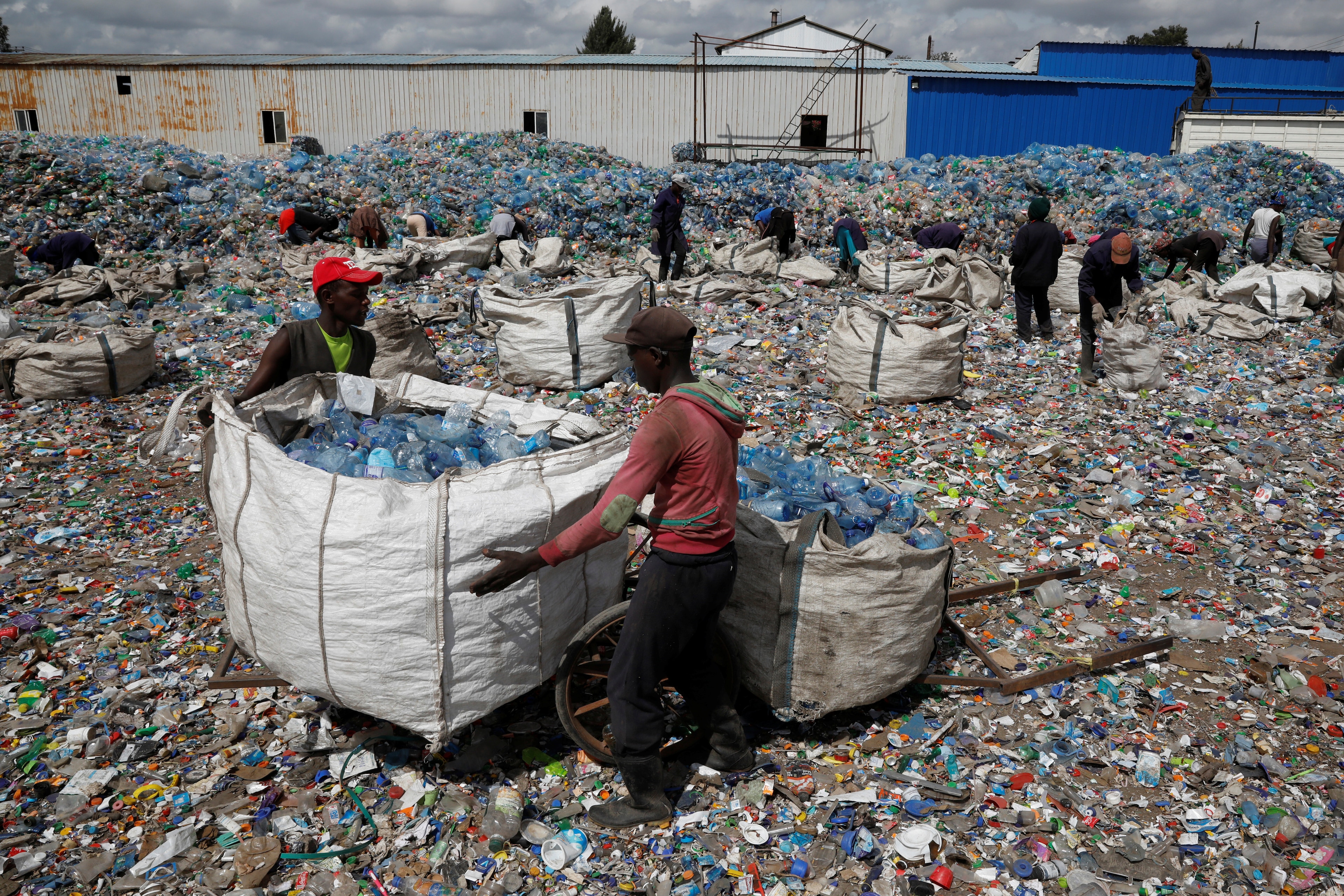This underwater restaurant teaches you about the ocean while you eat
Under receives funding from the Norwegian government as an underwater laboratory
Image: REUTERS/Lefteris Karagiannopoulos
Stay up to date:
Future of the Environment
An underwater restaurant has opened in Norway, and it’s doubling up as a marine biology research lab. Under (meaning ‘wonder’ in Norwegian) is off the coast of Lindesnes, a town on Norway’s southern tip. Its 34-metre structure is partly submerged, with the dining area five metres underwater.
Its owners hope the restaurant will foster curiosity about the ocean among diners and raise awareness of the importance of healthy marine ecosystems, as human activity continues to threaten them.
A massive glass wall offers diners a unique view as they eat. Ocean life from cod to crabs, dogfish, lobsters and even seals swim by, while during stormy conditions diners experience the underwater world at its harshest.
Under also receives funding from the Norwegian government as a laboratory. Nearby Agder University brings students to the restaurant to devise and carry out research into the ocean ecosystem. The university could not have funded the laboratory without the collaboration of the restaurant, Trond Rafoss, an associate professor at Agder University and Under's in-house marine biologist, told The Guardian.
“More and more [research funds are] tied to the impact on society and business”, he said.
“The biodiversity of cold waters is not well known. We think the more people gain knowledge of marine life, the more they will look after our oceans.”
“We call the whole thing an eye into the coastal ecosystem.”
Rafoss is also investigating how scientists can better use entertainment experiences, such as dining out and holidays, to make learning about the environment fun.
“When people go on holiday they want to learn something new in an enjoyable way”, he told The Guardian.
“We’re interested in finding out about the type of experiences that increase knowledge of natural sciences among the public.”
The building was designed by the same Norwegian architects that built the National September 11 Memorial Museum in New York, a company called Snøhetta. The concrete structure is intended to act as an artificial reef, so its outer walls provide a home for limpets, seaweed, barnacles and sea snails. The area endures harsh weather conditions, and Snøhetta says the building has been fortified accordingly, able to withstand the “wave of the century”.
The chefs cook with local, sustainable seafood, using every part of the fish, as well as underappreciated species and bycatch - fish which often gets discarded after being caught unintentionally in nets meant for other sea animals.
But dining at Under doesn’t come cheap. It’s currently 2,250 NOK ($260) for an eight-course tasting menu, and an additional 1,450 NOK ($167) for wine pairings, making it an exclusive entertainment option. Under expects about 12,000 diners every year, and it’s already booked out months in advance.
However, people who can’t afford the hefty cost can take part virtually. The restaurant says it is soon setting up a live stream of the underwater view, and asking internet users to join a citizen science project. People will be able to capture their own images of any unusual species they see swim by. These images will then be used for machine learning, to train the camera to detect new or unusual species itself. A public engagement centre is also planned for the end of this year.
“Part of it is allowing people to have a deeper relationship with the ocean”, Snøhetta’s co-founder Craig Dykers told The Wall Street Journal.
“Humans are mostly made up of water. We’re tremendously connected. Being in the restaurant will take us back to our ancient history.”
Don't miss any update on this topic
Create a free account and access your personalized content collection with our latest publications and analyses.
License and Republishing
World Economic Forum articles may be republished in accordance with the Creative Commons Attribution-NonCommercial-NoDerivatives 4.0 International Public License, and in accordance with our Terms of Use.
The views expressed in this article are those of the author alone and not the World Economic Forum.
Forum Stories newsletter
Bringing you weekly curated insights and analysis on the global issues that matter.
More on Nature and BiodiversitySee all
Tom Crowfoot
July 30, 2025
Oliver Kade and Sarah Hadley
July 28, 2025
Nasim Pour, Sebastien Cross and Joel Gould
July 28, 2025
Elena Raevskikh and Giovanna Di Mauro
July 23, 2025
Arunabha Ghosh and Jane Nelson
July 22, 2025






